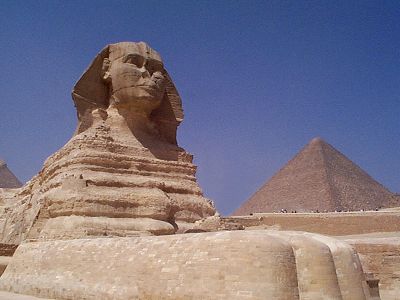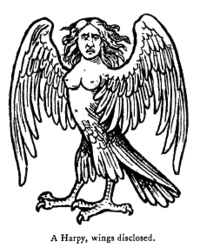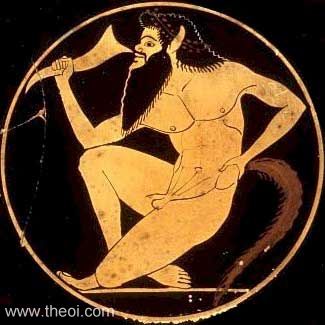Let's start way back around 3150 BC in Ancient Egypt where civilization believed in a wide array of powerful Gods and Goddesses who themselves ruled over many aspects of the world: death, love, the sun, the night sky and the list goes on.
There were a few particular Gods who where in fact combined with animals, the most well-known being Anubis, the Jackal-headed God. Contrary to popular belief, he wasn't the God of death. He was actually the God on embalming and readying the spirits of the dead for passage to the afterlife. There was also Horus, the Hawk-headed God of the Pharaoh who was responsible for overseeing the Pharaoh. Bastet, the God of cats, had the head of a cat. Thoth, the head of an Ibis.


The Sphinx is a famous landmark in Egypt which is a recumbent lion with a distinct human head. In Egyptian myth, she is portrayed as merciless and treacherous. Those who could not answer her riddle were devoured by the ravenous monster.

Fast forward to the 8th century BC in Ancient Greece and we see hybridization in the animal-human sense at its most well-known with the mythical stories of Perseus and Medusa, Theseus and the Minotaur, Harpies and more. All of these beasts seemed to represent a certain aspect of humanity--ones that portray the darker side of out psyche. The Minotaur was a bloodthirsty creature whom was trapped in a labyrinth and deemed to be a monster. Spawn of a Cretan Bull and Pasiphae, the Minotaur is often seen as a metaphor for the feral blood-thirst inside all human beings.




Harpies, half bird, half woman creatures who pray on the innocent, pillage and steal, represent the more spiteful side of women and how they can be seen as monsters. Also, birds are often seen as graceful creatures associated with women, like white doves for example. However, when twisted in a dark way, you get such creatures as harpies.
Satyres are the goat-human hybrid embodiment of lust and fertility. They are a minor deity and companions of Pan, deity of nature in Greek mythology.

The legends of these creatures have conquered the test of time and have been told about through generations and even today continue to thrive in all forms of media: sculpture, film, literature, video games, architecture and even clothing. They'll be part of everyday entertainment in years to come, too.

No comments:
Post a Comment